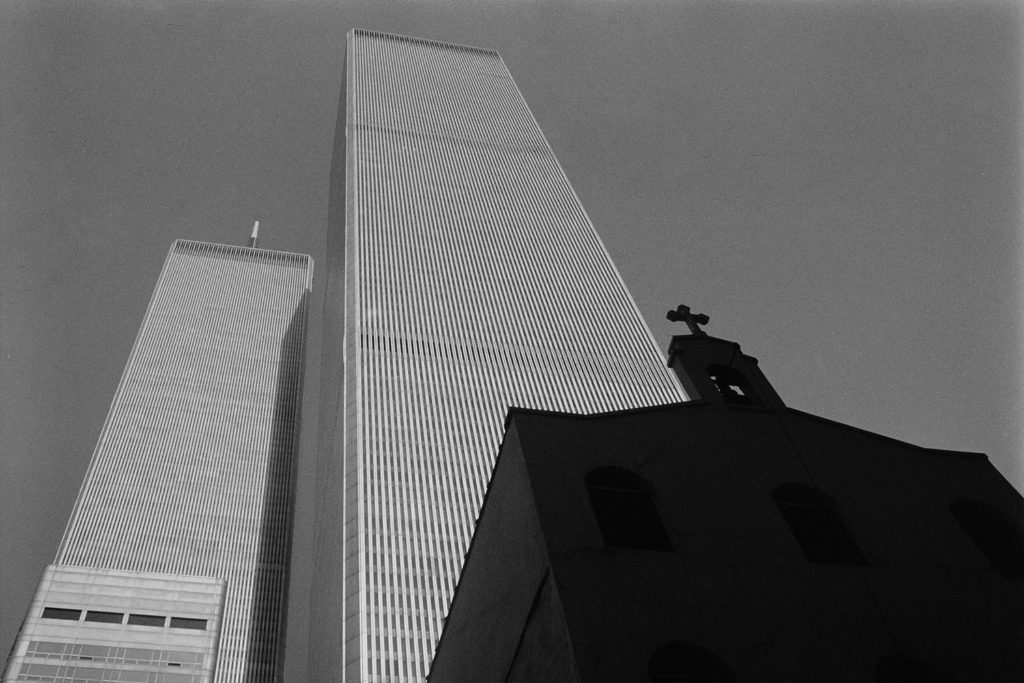By James Chancellor
Since the tragedy of September 11, 2001, I have been asked any number of questions regarding Islam and these terrible acts of murder. The two most common are: Do Bin Laden and the Al Qaeda network represent “true Islam”? And are such violent attacks on innocent people consistent with the Qur’an?
Answering these questions is not as straightforward a matter as it might seem. The first question assumes that Islam is some kind of static, monolithic reality by which the actions of all Muslims can be judged. In fact, Islam is a dynamic and varied religious tradition. In a real sense, Islam is what Muslims think, say, and do–as Muslims. And since there are nearly a billion Muslims spread over much of the globe, Islam is a varied and most complex phenomenon. Clearly what is “true Islam” to one Muslim is not to another.
The teaching of the Qur’an with regard to violence is also a matter of some dispute among Muslims. What Muslims believe the Qur’an means varies widely from community to community and from individual to individual. And certainly a western Christian is in no more a position to say what it “really” means than an Arab Muslim is in a position to say what the Bible “really” means.
We are still faced with the fact of “Islamic violence” and we need to come to terms with it. President Bush has told us on any number of occasions that Islam is a religion of peace. He has also informed us that we worship the “same God.” Franklin Graham has told us that Islam is an “evil religion.” Neither of these men is an expert about Islam, but they do help frame the question. Is violence more “at home” in the Muslim world? Or more precisely, is Islam intrinsically violent?
The Nature of Religious Violence
First we must clearly define what we mean by “religious violence.” Virtually all societies are both violent and religious to one degree or another. “Religious violence” is not simple violence done by religious people. Millions upon millions of people perished in the conflicts of the 20th century that primarily involved the “Christian” nations of the West. While the men who attacked Pearl Harbor were from Japan, a country dominated at the time by the Shinto religion, the men who dropped the atomic bombs on Japan, as well as those responsible for the Holocaust, were from Western nations dominated historically by Christianity. Yet none of these acts can be described as “religious violence.” For our purposes, religious violence is characterized as violent acts done by religious people acting as religious people, informed and legitimized by a religious vision, and for the purpose of achieving specifically religious goals.
History offers many examples of religious violence. It is hard to imagine a more “peaceful” religion than Buddhism, yet the martial arts spring directly from Zen Buddhism. Christianity has far too many examples of religious violence: the Crusades, the Inquisitions, the murder of thousands of Anabaptists, the execution of heretics in Geneva, and the murder of thousands of “witches” throughout Europe and America. Religious violence is not been limited to Islam.
The Modern Transition
Beginning in the 17th century, a profound ideological shift began in the Christian West. Religious institutions and religion itself separated from the state and thus from the exercise of political power. By the 20th century, religious actors and institutions no longer could employ the power of the state to achieve their religious goals. Since the state is the only agent within modern society authorized to employ violence, violence was eliminated as a legitimate tool of the religious enterprise. The vast majority of those in the modern West now view religious violence not only as illegitimate, but abhorrent and irrational.
This position represents the vast majority of Western Christians, but it is not necessarily the “Christian” perspective. The majority of practicing Christians no longer reside in the modern West, but rather in Africa, Latin America and Asia. Many of these Christian communities have not experienced the ideological transformation of modernity, and on occasion do employ religious violence. The Naga people of northeast India, the Igbo of southern Nigeria, and the indigenous Fijians come to mind immediately.
The Case of Islam
Today we face the reality of “Islamic terrorism” and repeated violent acts against innocent persons in the name of Islam. These acts beg the questions: “Is Islam more prone to violence?” Or more precisely: “Is religious violence more at home in Islam than in other religions?” The simple answer to that question is “yes.”1
President George Bush had noble motives when he declared that Islam was a religion of peace and that the September 11 terrorists had “hijacked” Islam. However, right motives do not necessarily lead to right observations. Islam is not a religion of peace. There are a number of internal dynamics that create strong predilections toward the use of force and violence. The first and most obvious is the clear teachings of the sacred literature and subsequent theological constructs. Jihad, or “striving for Islam,” is a clear and unambiguous component of the Islamic faith.2
Prescribed for you is fighting, though it be hateful to you. Yet it may happen that you will hate a thing which is better for you; and it may happen that you will love a thing which is worse for you: God knows, and you know not. (Qur’an 2:216)3
There is a strong spiritual tradition that teaches that the struggle with one’s own desires and passions is the “greater Jihad” and that the physical struggle with an enemy is the “lesser Jihad”. Nonetheless, the Islamic tradition in both classical and contemporary manifestations not only sanctions violence, but also clearly establishes religion and religious goals as a legitimate cause for war. The Qur’an makes abundantly clear that God will base his judgment of men on their willingness to fight “in the path of God.”
Those believers who sit at home, other than the disabled, are not on equal level with those who strive in the path of God. … God has promised good to each, but God distinguished those who strive above those who sit with a great reward. (Qur’an 4:95).
To my knowledge, Islam is the only faith that declares fleeing the battlefield to be a grave sin (Qur’an 8:16). Jihad is indeed the “sixth pillar” of the Islamic faith, and modern attempts to minimize or evade this reality are both exegetically and historically imaginative.
However, identifying Jihad as an essential component of Islam merely describes, it does not explain. There is a reason for Jihad and thus for religious violence. That reason lies in the very nature of the Islamic vision. Islam is not merely a religion in the modern Western sense of the word. Islam is a self-contained program for the complete ordering of human society. From the very beginning, Islam was directed squarely at the social fabric and quickly developed a comprehensive program for all of human conduct. This program includes what we in the West normally consider religious life, but also the full range of social relationships, business ethics, and most significantly for our discussion, political life and political structures. Very quickly, this comprehensive vision was codified into a legal system, known as the Shari‘a. The Shari‘a provides the context for Islam as a political force.4
The missionary vision of Islam includes the eventual personal conversion of individuals, but begins with the establishment of “God’s reign on the earth.” This can only be accomplished under a Muslim ruler who accepts the advice and direction of Islamic religious and legal experts. In all times and places, political structures are established and maintained through force. Violence is endemic to Islam, but not because Muslim people are more violent by nature—they are not. It is not so because Muslim people are more “fanatical” or “fundamentalist.” Nor is it so because Muslims are more irrational or driven by passions. It is so because Islam, by its very nature, involves the reordering of human political structures and institutions. And at all times and places, such reordering involves the use of force. Jesus looked into the eyes of Pilate and stated: “My kingdom is not of this world.” Muhammad never made such a statement.
The Model of the Prophet
There is a second and closely related reason for the use of force within Islam, the model of the Prophet. It is difficult to exaggerate the influence of Muhammad’s life on Muslims. Muslim theology has consistently held to the full and ideal humanity of Muhammad. He is human, but he is the perfect human. Muslims all over the globe grow up reading and memorizing the sayings and deeds of the Prophet. And they rely on this “Sunnah” to shape and direct their lives.
Muhammad has a three-fold title: Prophet, Warrior, and Statesman. As Prophet, he received the message of God for the “new world order.” As Warrior, he employed what force was necessary to make that message a reality. As Statesman, he developed the political structures necessary to maintain the message. Muhammad was twice wounded in battle. In general, Muslims take this aspect of the prophet very seriously.
I was once involved in an interfaith dialogue with a number of Muslim leaders. One seemed particularly obsessed with the Crusades and went on and on about the savagery and brutality of the “Christian” armies. I finally responded that while the Crusades were terrible, it was not as if Muslims had not swung a sword or two as well. In all seriousness, he looked across the table from me and said, “That is true, but Jesus told you not to.” He was right! And Muhammad not only employed violence, but also fully validated it as a means to achieve the religious vision that is Islam.
The Context for Violence
Bin Laden, as well as the Saudi, Egyptian, Indonesian, and other Muslim participants in the attacks on New York, Washington, and Bali, represent the most violent and extreme aspects of a broad and popular movement in the Islamic world. For better or worse, this movement has come to be termed “Islamic Fundamentalism.” While it is true that only a small percentage of Muslims condone the attacks of September 11 or October 12, a substantial percentage of Muslims would support the goals and fully understand the reasoning behind such extreme action. Understanding this requires some historical context.
Beginning in the late 7th century, Muslims began to spread across much of the globe, and soon established the most powerful and successful empire in human history. For almost nine hundred years Islamic civilization was the most militarily powerful, economically successful, and culturally creative on earth. God clearly seemed to be on their side. Then, beginning around 1750, everything began to fall apart. By 1918, virtually the whole Islamic world had been overrun by Western Christian imperialists, and the Islamic world was in stunned disarray.
The response of the vast majority of ruling elites was to become as much like the West as possible, to emulate the colonial masters in order to be free of them. They remained Muslim, but adapted to the modern, that is western, world. By the mid-twentieth century, Western colonial rule was coming to an end. Independent nation states were formed, with the promise of a brighter future. But the promise soon faded, and the lives of most Muslim people did not improve.
Beginning about 1950, a new response to Muslim failure and humiliation came to the fore. The Christian West was not superior, but rather evil. Muslims had fallen prey to the evil ones because they had abandoned their faith and religious practice. To take back their rightful place in the world, Muslims must rid themselves of the social, economic, political, cultural, and religious oppression of the Christian West and establish an Islamic system for all of society. Such a goal can only be achieved through a combination of religious revival and drastic political change. And drastic political change rarely comes without violence.
In the early stages of the Islamic Fundamentalist movement, almost all the violence was directed at corrupt regimes within the Islamic world.5 Several events have redirected some of the violence toward what is now perceived as the true source of Muslim distress: the 1967 war in which Israel took control of the holy city of Jerusalem, the Israeli invasion of Lebanon and the entry of the United States military into that civil war, and the first Gulf War and subsequent stationing of “infidel” troops in the Muslim holy land of the Arabian Peninsula.6 These events, coupled with uncritical and unwavering support of Israel, located the United States as target number one in the “battle for Islam.”
Martyrdom Operations
While the religious affirmation of violence and the cultural, political and economic depression of Muslims may help explain attacks against Western targets, something more needs to be said regarding the nature of these attacks. Suicide attacks aimed at non-combatants are a new development within Islam. Suicide has no scriptural or historical precedent in Islam. Islamic history offers no positive models of suicide. Up to very recently, the martyr was one who fell in battle against an armed enemy. Likewise, the Qur’an clearly precludes any attack on innocent women and children. Muslim armies have been no more and no less humane than other armies, but assault on innocent non-combatants has never been validated as “Islamic.” Suicide attacks—what some Muslims call “martyrdom operations”—like those occurring in Israel, Russia, Kenya, Indonesia, and the United States are something new, in a religious tradition that generally abhors innovation.
The explanation for this innovation lies in the profound sense of humiliation, despair, and powerlessness that dominates the world of Muslim extremists. Because of this profound sense of loss, and the overwhelming economic, military, and strategic superiority of the enemy, some within the radical Islamic movement produced new interpretations of the sacred literature. Because of the awesome power of the enemy, any and all methods of fighting are justified. From their perspective, the Christian West and their proxy Israel have declared total war on Islam and Muslim people.7 And in total war, there are no “innocent” civilians. For many extremists Muslims, “martyrdom operations” are the one method of overcoming despair by striking a meaningful blow for Islam. And the self-sacrifice inspires others and builds a spirit of optimism at a time when there is very little reason to be optimistic.
The targeting and killing of civilians is the most problematic aspect of “martyrdom operations.” That fact alone should invalidate these operations. Many religious authorities in the Muslim world have issued rulings against martyrdom operations.8 However, in the eyes of most Muslim radicals, the official religious bodies no longer carry the moral authority of Islam. They are seen as corrupt and under the control of apostate political rulers. This attitude has generally freed up the extremists to come to their own interpretations and judgments.9
The Future
Islamic violence against the West will continue. Israel will continue to be the primary source of Muslim angst and humiliation. The American and allied occupation of Afghanistan and Iraq will provoke even greater hatred for the West, enhance the already strong sense of victimization among radical Muslims, and more than likely increase their numbers. The more moderate official Islamic establishments are in no position to influence the extremists, never mind control them. But there is hope. At some point, the legitimate Islamic leadership must lead ordinary Muslims to see that these radical interpretations of the Jihad tradition are not only non-Islamic, but are also ultimately destructive to the moral fiber of the Muslim community. But I fear many more will die before that day dawns.
1 For an alternate answer to that question, see Bruce B. Lawrence. Shattering the Myth: Islam Beyond Violence (Princeton: Princeton University Press, 1998). In this work, Lawrence makes a case for Islam as a complex international religious system that cannot be reduced to simple stereotypes or generalizations.
2“Striving for Islam” and “striving in the path of God” are common euphemisms for engaging in armed combat to achieve Islamic goals.
3All Quranic quotations are taken from A.J. Arberry, The Koran Interpreted (New York: Macmillan, 1955).
4See Daniel Pipes, In the Path of God: Islam and Political Power (New York: Basic Books, 1983), 10–13.
5It is perhaps important to note here that in almost all cases, Islamicist movements were first the subjects of state violence, and took up violence themselves in response.
6It is difficult to overstate how this act has angered and humiliated those on the extreme edge of the Islamicist movement. It is roughly akin to some Muslim nation stationing troops in Vatican City. To add to the insult, there are female troops driving tanks, in a country that does not allow women to drive automobiles.
7It should be noted that this understanding is not drawn from thin air. While we in the West are made constantly aware of Israeli casualties from these types of attacks, the body count is at least three to one, with three times as many Palestinian civilians dying at the hands of Israeli occupation forces.
8The Sheik of Al Azhar University in Cairo, the closest thing to an Islamic Pope, categorically rejected suicide operations some years ago. Others have been slower to respond. However, when the operations strike home, action is taken. After the attacks on Saudi soil, the Saudi government acted to “re-educate” all the clergy, demanding they teach against suicide operations as un-Islamic and dismissing any who failed to do so. Indonesia was struck by attacks in 2002 that have had a very serious negative impact on the economy. The Indonesian Council of Ulemas issued a binding decree in December of 2003, citing any form of terrorism as unacceptable under any definition of Jihad and falling outside the teaching of the Qur’an.
9In general, the radical Islamic movement is a lay led affair. Most of the leading thinkers are not theologically trained. Though Bin Laden lays claim to the title of “Sheik,” he is in fact a very successful businessman with little theological training.
Published March 30, 2016




